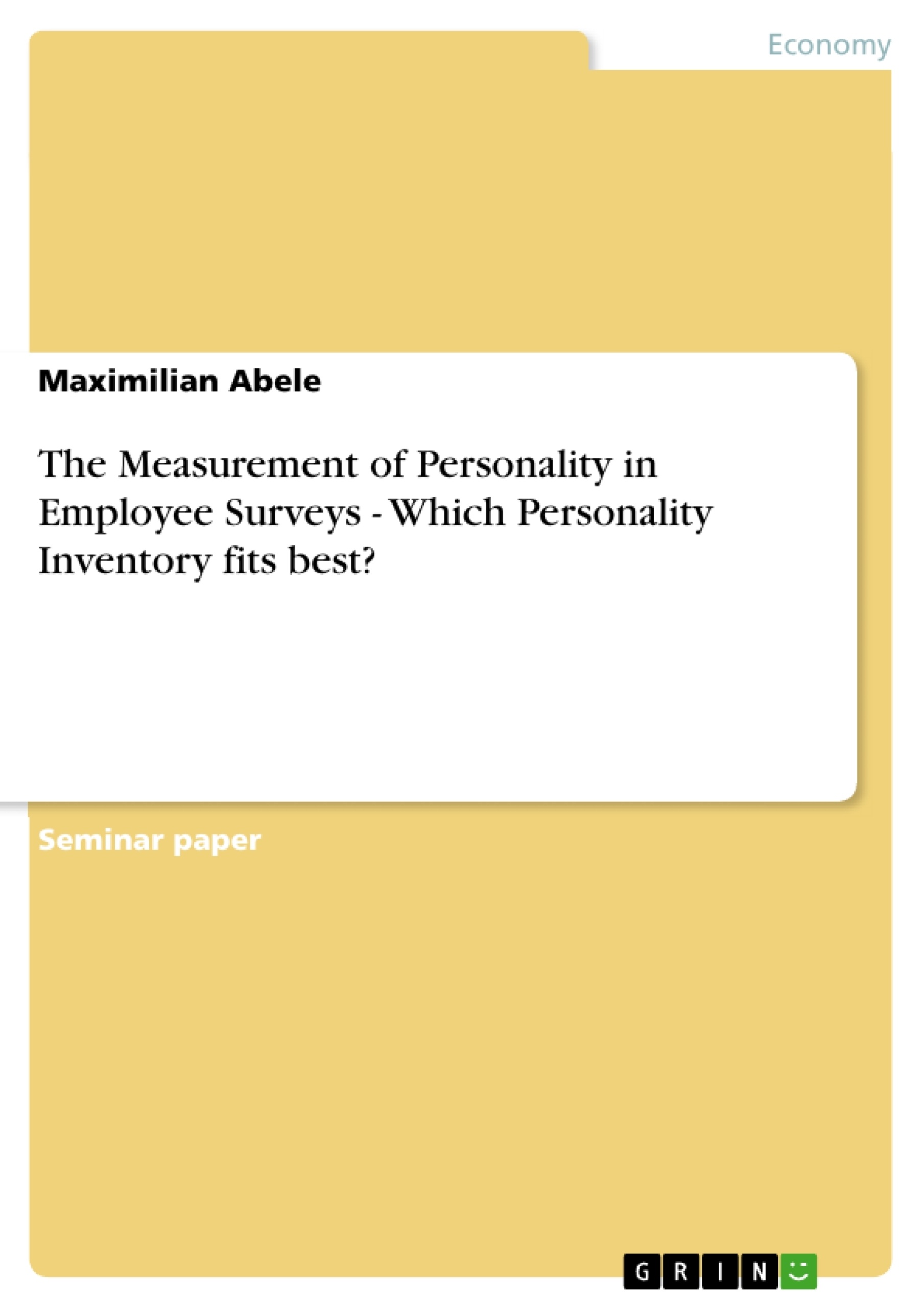Investigators from different areas of research focus on personality and its impact on different aspects of life. Especially in work related contexts, literature shows increasing research interest regarding personality and how it affects issues in human resource management such as leadership, job performance, and organizational citizenship behavior. Hereby, the five-factor model of personality achieved popularity in a meanwhile. In this seminar paper, different personality inventories are analysed regarding their usability in the context of employee surveys. A recommandation based on the analyses is given.
Inhaltsverzeichnis (Table of Contents)
- Introduction and research problem
- Theoretical foundation
- Definition of personality
- Dimensions of personality
- The five-factor theory of personality
- Psychometric characteristics of established test instruments
- NEO Five Factor Inventory (NEO-FFI)
- Big-Five Mini-Markers (BFMM)
- Big Five Inventory (BFI)
- Construction of the test instrument
- Conceptualization
- Operationalization
- Measurement and scaling
- Questionnaire design
- Common biases in personality research
- Conclusion
Zielsetzung und Themenschwerpunkte (Objectives and Key Themes)
This seminar paper aims to explore the measurement of personality in employee surveys, specifically analyzing which personality inventory best suits the needs of such assessments. It delves into the theoretical foundations of personality measurement, focusing on the five-factor theory and its application in various test instruments. The paper examines the psychometric properties of established tests such as the NEO Five Factor Inventory, Big-Five Mini-Markers, and Big Five Inventory, highlighting their strengths and weaknesses in the context of employee surveys. The paper also explores the process of constructing a reliable and valid personality test instrument, including conceptualization, operationalization, measurement and scaling, questionnaire design, and common biases that may influence the findings. Key themes explored in this paper include:- The definition and dimensions of personality
- The five-factor theory of personality and its relevance to employee surveys
- The psychometric characteristics of various personality test instruments
- The construction and design of personality test instruments
- Common biases that may affect the results of personality research
Zusammenfassung der Kapitel (Chapter Summaries)
The introduction establishes the research problem of identifying the most suitable personality inventory for employee surveys. It highlights the importance of understanding personality in the workplace and the need for reliable and valid measurement tools. The theoretical foundation chapter provides a comprehensive overview of personality theory, including the definition of personality, various dimensions, and the five-factor theory. It explores the different facets of personality and their significance in different contexts, particularly within the workplace. The chapter on the construction of the test instrument delves into the process of creating a personality test that is reliable, valid, and suitable for employee surveys. It discusses the various stages involved, including conceptualization, operationalization, measurement and scaling, and questionnaire design. It also highlights the importance of minimizing biases in the design and administration of the test instrument.Schlüsselwörter (Keywords)
The primary focus of this paper is on the measurement of personality in employee surveys. Key concepts explored include personality, the five-factor theory, psychometric characteristics, test instruments, and common biases. The paper examines various personality inventories, such as the NEO Five Factor Inventory, Big-Five Mini-Markers, and Big Five Inventory, and analyzes their suitability for assessing personality in the context of employee surveys.
Final del extracto de 34 páginas
- subir
- Citar trabajo
- Maximilian Abele (Autor), 2012, The Measurement of Personality in Employee Surveys - Which Personality Inventory fits best?, Múnich, GRIN Verlag, https://www.grin.com/document/197224
Leer eBook



